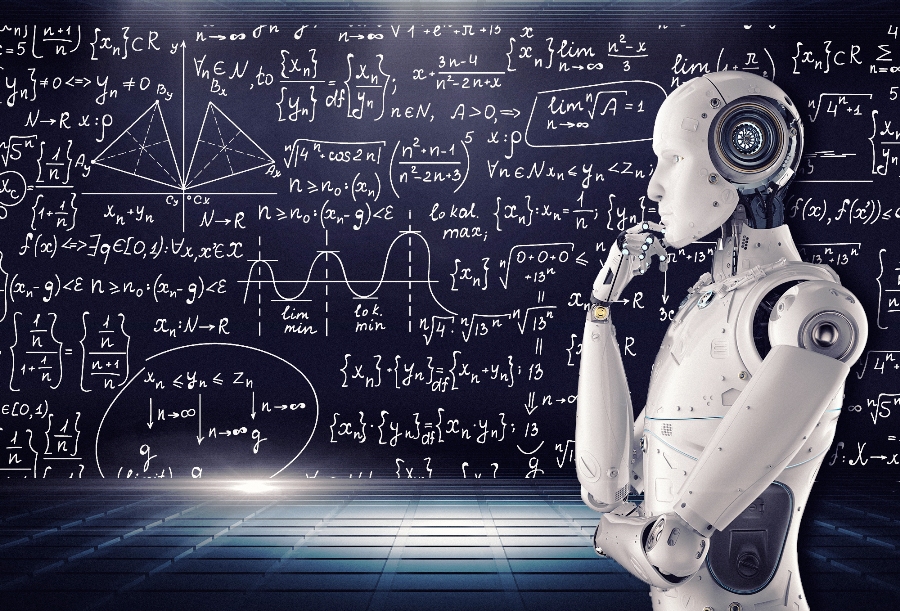by Umaima and Mujtaba Hussain
SRINAGAR: The Fourth Industrial Revolution currently underway is blurring the boundaries between the physical, digital, and biological worlds. It’s a fusion of advances in artificial intelligence (AI), robotics, the Internet of Things (IoT), 3-D printing, genetic engineering, quantum computing, and allied technologies.

While the world is embracing these AI machines— which like human brains are capable of thinking and mimicking human actions to execute tasks— Jammu and Kashmir seem to be far away living on some other planet. The education sector in Jammu and Kashmir is using the AI-enabled process online but is yet to get the new generation to pick up the high-end skill.
These AI machines exhibit human mind-like traits such as learning, reasoning, perception, and even problem-solving.
Now some bot chat applications have gone online, which are capable of offering answers to questions, giving information, helping check your text for grammatical errors and even writing booklets and movie scripts. These have become a new challenge for the teaching fraternity across the globe as students have started seeking robotic help in finishing their assignments.
The work on intelligent machines started right after the Second World War. In 1947, English mathematician Alan Turing gave a lecture on it in London saying that: “What we want is a machine that can learn from the experience,” and that the “possibility of letting the machine alter its own instructions provides the mechanism for this.”
He was the first to claim that AI was best researched by programming computers rather than by building machines.
Seventy-odd years down the line, AI computer programmes are able to learn automatically and adapt to new data without little or any assistance from humans. This automatic learning is facilitated by Deep Learning technological programme under which a computer programme is fed with a large amount of organised and unorganised data in the form of text, images, videos, audio, etc.
AI-based technology has endless applications and is extensively used in different industries and sectors. According to Servion Global Solutions, by 2025, 95 per cent of customer interactions will be powered by AI.
Strategic game systems such as Chess and Go use automated decision-making through AI. Personal assistants on our smartphones such as Amazon’s Alexa, Apple’s Siri, and Google Assistant use AI to understand human speech.
In the healthcare sector, AI is used for dosing drugs and sharing out different treatments to treat patient-specific diseases and surgical procedures. AI is utilised for flourishing improved diagnostic assistance and to connect with doctors virtually. AI uses the combination of historical data and medical intelligence for the discovery of new drugs.
Self-driving cars are another example of AI technology where the consequences of any action will impact the end result.
In the Financial Industry, AI is used to detect and flag activity in Banking and Finance such as unusual debit card usage and large account deposits.
AI is also being used to help streamline and make trading and stocks easier to estimate. AI-driven trading platforms make millions of trades per day without human intervention.
Advanced web search engines like Google, Bing, Baidu, and Yahoo use AI to yield results while internet searching.
Top streaming platforms like Netflix, Amazon, and YouTube use AI to recommend content to users based on their personal browsing patterns.
AI has affected the education sector with a wider range than in any other field. It has made education and learning easy for students. AI helps in creating smart content, personalised learning solutions, and automating administrative tasks. AI has enhanced tutoring by helping students improve their weak spots and sharpen their skills.
It plays a major role in agriculture by creating awareness and knowledge regarding irrigation, pesticides, fertilizers, and further crop production facilitation through computer vision, Robotics, and AI-enabled applications.
In developed countries, the affiliation of AI with Smart City projects has also enhanced the appeal of a rapidly growing population and provided them with enhanced quality of life. Traffic control and other transportation provisions have also reduced congestion and crowding, leading to easier management.
AI has most importantly set its roots in Defence and Security, Cyber Security, Data analysis techniques and detecting entities.
It has also improved governance and policy implementation through better citizen-government interface, categorisation, and arrangement of documents.
AI has paved the way to effortless undertakings in various aspects. It has made a huge impact on human existence and our way of living.
There have been many plus points with the evolution and utilisation of AI that include labour-saving, reduction in human lapses, accuracy, and ceaseless operation.
However, there are certain disadvantages too that cause a lot of technical errors and security issues, involving disruption of human potency, negligence of self-efficacy, and lethargic behaviour. Nevertheless, the impact of AI has made people use it.
According to the estimation of NITI Aayog, AI has the prospect to add around 1 trillion US dollars to India’s economy and boost the annual growth rate up to 1.3 per cent by 2035.
Despite the country’s eminence in the global IT industry, it has been steadily adapting to the latest digital technologies compared to its counterparts in China and the US. Estimates signify that only 22 per cent of the corporations in India use AI in any commerce.
The US invested around $9.7 billion in AI in 2018 whereas around $150 million have been invested in more than 400 companies over the past five years in India.
According to Statista, revenue from the Artificial intelligence (AI) software market worldwide is expected to reach 126 billion dollars by 2025.
Inadequate availability of AI expertise, manpower, and skilling opportunities, and data-related issues, lack of funding and high resource costs, fear of job losses, and lack of awareness have been the challenges to India in adopting AI. According to a 2017 study by the McKinsey Global Institute, about 800 million people around the world will lose their jobs to robotisation by 2030.
Though AI has some adversities, in the larger run, it has been fortuitous and beneficial for people all around the world. AI has caused much more ingenuity and dexterity than it has caused hindrances to human life.
A large section of intellectuals and innovators believe that AI-programmed machines may exceed the capacity of humans to learn or reason out any subject and it will be dangerous to human existence on the planet. However, others remain doubtful because all perception and cognitive activity is a function of value judgments that are subject to human experience time and again.
It is being argued that AI will wholly reinstate the need for common labour. Furthermore, those in approbation of AI believe that it will augment human aptitude to get better outcomes.
With AI ruling the roost in major sectors of life, would Jammu and Kashmir reap benefits any time soon?















